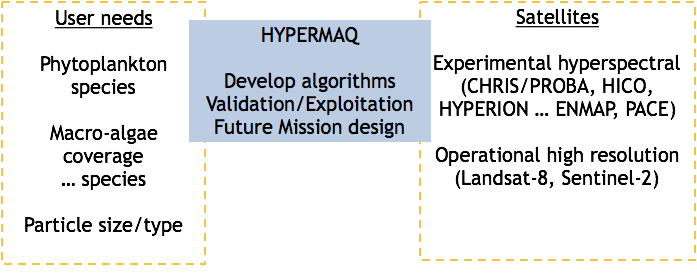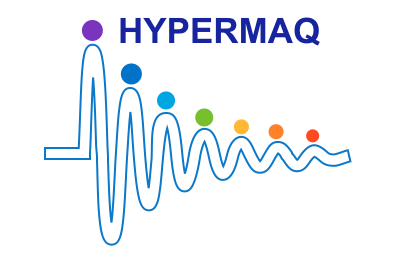OBJECTIVES
The general objective of the HYPERMAQ project is to develop and test new algorithms for aquatic remote sensing of coastal and inland waters, using both hyperspectral and high resolution multispectral satellite data to provide more than “just” concentration of suspended particulate matter and chlorophyll. Test sites focus particularly on turbid waters.
Specific remote sensing objectives include:
- Design and testing of hyperspectral algorithms for phytoplankton species composition in turbid waters and identification of their limitations.
- Design and testing of hyperspectral algorithms for macro-algae cover and type.
- Design and testing of new algorithms for retrieval of particulate backscatter spectral slope and particulate backscatter:absorption for non-algal particle size/type in turbid waters.
- Design of an in situ instrument system for a hyperspectral validation network
- Provide recommendations for future satellite missions as regards design of spectral bands and signal:noise for aquatic applications
Specific scientific exploitation objectives include:
- Increase our understanding of multi-species micro-algal blooms in a shallow turbid coastal area characterized by pronounced spatial and temporal variation in turbidity and nutrients related to weather and climate variability.
- Increase our understanding of micro- and macro-algal blooms in shallow freshwater and brackish inland waters, with focus on benthic-pelagic interaction and algal groups.
- Design and testing of new algorithms for retrieval of particulate backscatter spectral slope and particulate backscatter:absorption for non-algal particle size/type in turbid waters.
- Increase our understanding of sediment transport in coastal and estuarine systems by supplementing existing remotely sensed concentration data with particle size information.
GENERAL OBJECTIVE
More than “just” concentration: algal species, particle size/type

